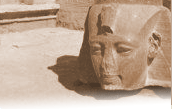Queen Puabi's Tomb
at Ur
During the Sumerian Early Dynastic III Period, c. 2550 BC, burials of kings, queens, and princes contained lavish burials including human sacrifice meant to provide a royal retinue to accompany the deceased into the Afterlife. Queen Puabi’s tomb was one of the most elaborate of these royal graves. Her underground complex started with a sloping passage that led into a large pit, with the vaulted stone burial chamber at one end. Below are photos of Queen Puabi's golden headdress and one of serveral golden lyres in situ (in their original position) as they we first encountered by Wooley's excavation.
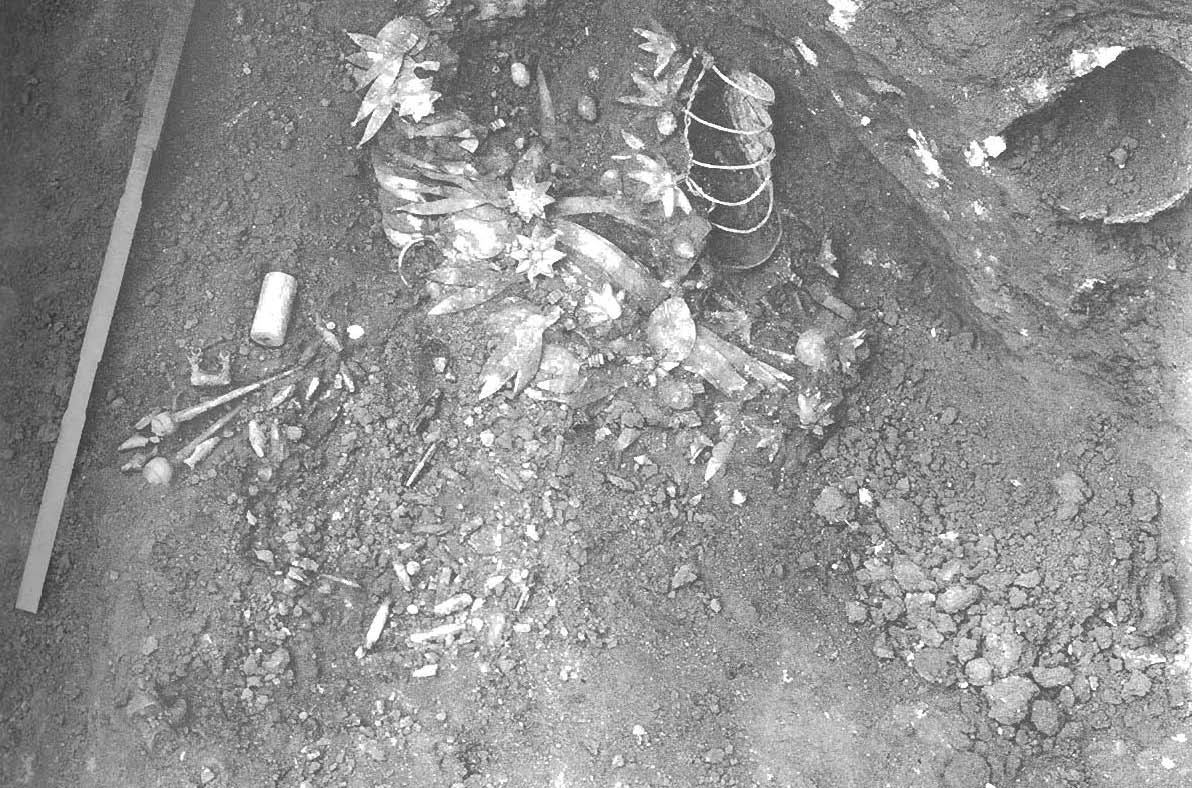 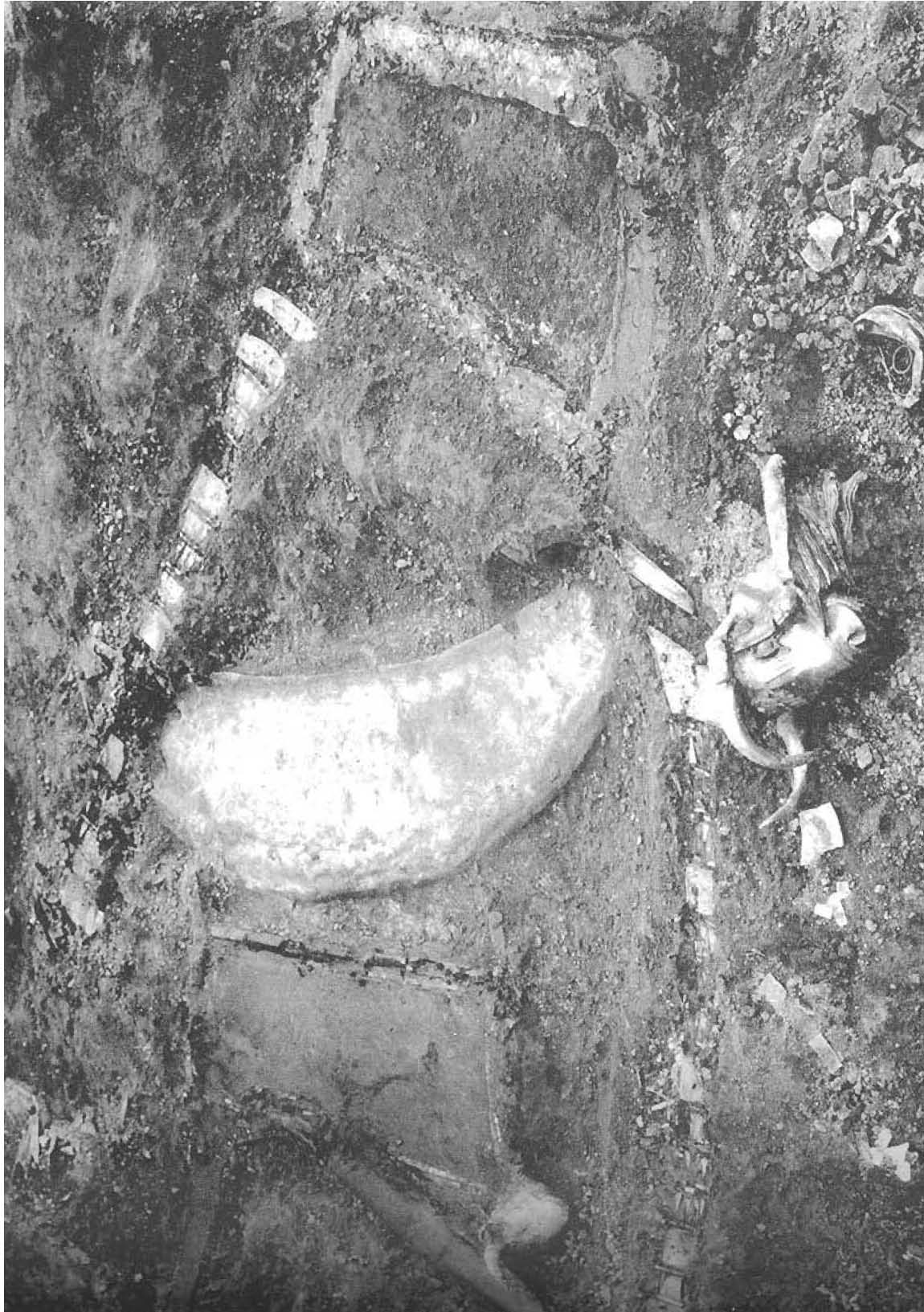
Through his careful excavation, Leonard Woolley was able to reconstruct the course ofQueen Puabi's grand funeral:
- The Queen’s lavishly dressed body was carried upon an
open wooden beir down into the tomb and placed in the burial chamber.
Puabi was decked with finery reflecting her station, including
her spectacular golden headdress (see the photo of the restored version below!). Food, drink, and lavish personal items were
placed with her (see the photo of one of her golden lyres restored below!).
- Three attendants came with her into the burial chamber, two crouched by the bier and one lying a little apart. They were drugged or killed before the tomb chamber was sealed up.
- The tomb chamber’s door was blocked.
- A grand procession of courtiers, including soldiers and male and female servants, went down into the open pit outside the burial chamber. Even the servents were clothed in finery: brightly colored garments with beaded cuffs, head dresses of carnelian and lapis lazuli, silver and gold jewelry. Officers wore the insignia of their rank and musicians bore sumptuously decorated harps and lyres. They were prepared to accompany the queen in to the afterlife!
- Driven or backed down the slope, chariots drawn by oxen joined everyon in the pit, drivers in the cars, grooms holding the heads of the draught animals
- Finally a guard of soldiers formed up at the entrance.
- Each person had a little cup of clay, dipped it into great copper pot, and drank poison or a strong sedative. One musician still had hands on her instrument, perhaps playing right down to the end. One woman had silver hair ribbon still coiled – why didn’t she put it on? Perhaps she was late for the ceremony and didn’t’ have time to dress properly (ie: she was late for her own funeral!).
- Someone came later to clean up, kill the animals, lay the instruments on top of dead. Then earth was flung in from above, perhaps on top of unconscious victims…
Although lavishly dressed, the sacrificial victims carried no personal grave goods with them, they were not laid out properly for burial – they were part of the tomb furniture!
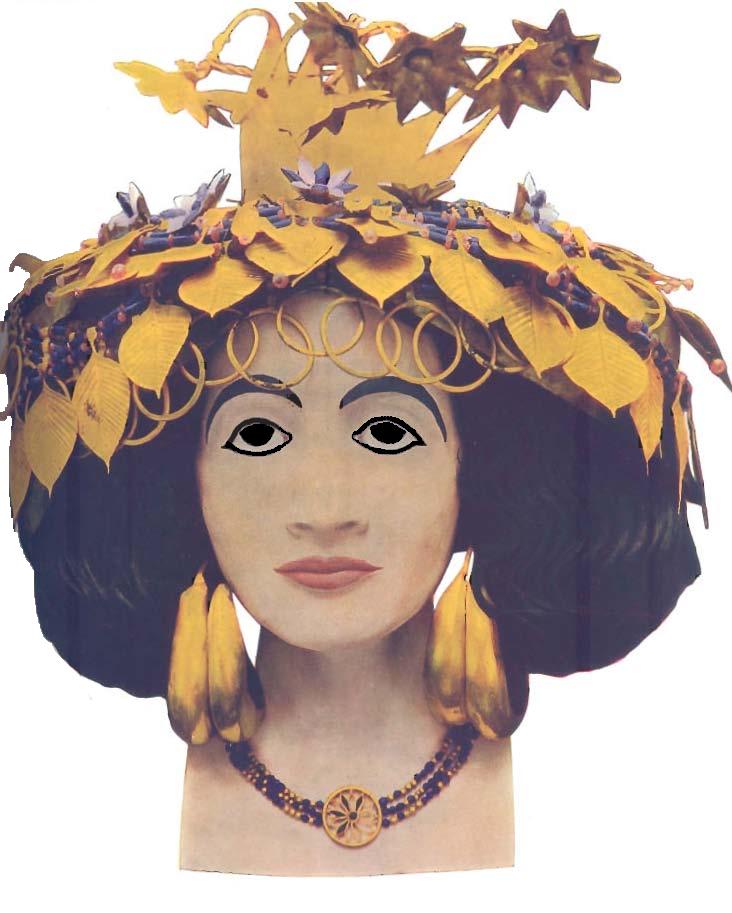 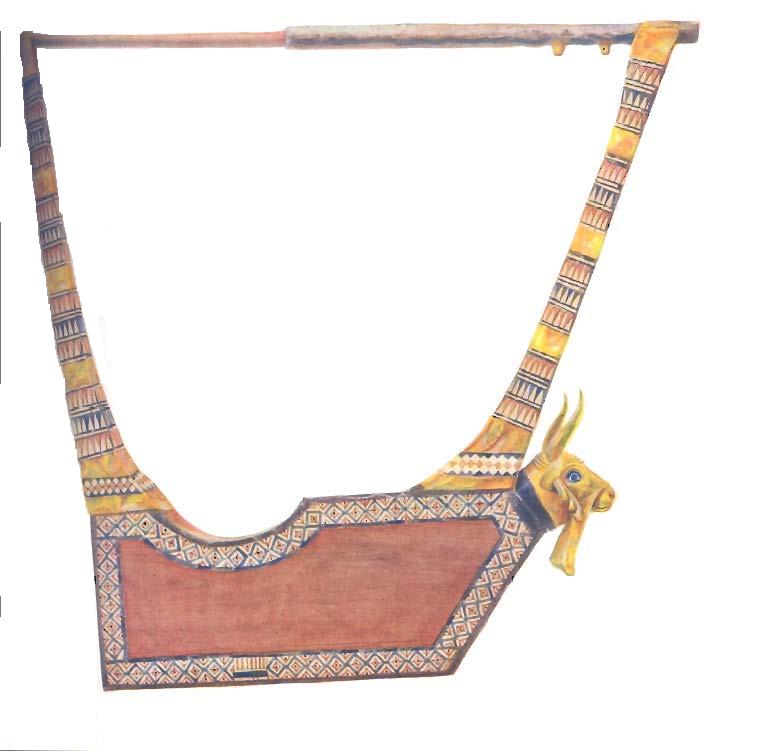
|

